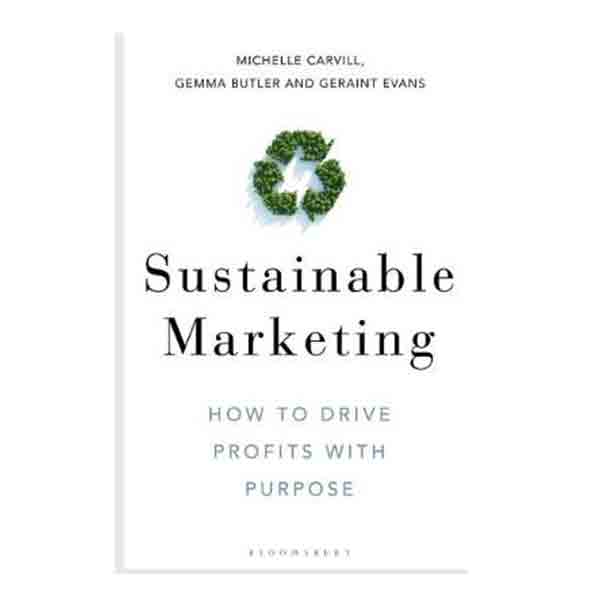Focusing on creating a sustainable business culture brings a myriad of rewards, from increased sales to fierce customer loyalty. If you are the proprietor of a small company, you could believe that the influence your company has on the surrounding environment is negligible. However, the customers who buy your items do not perceive it in such a light.
In the face of escalating environmental problems, people are beginning to show their disapproval by voting with their money. Because consumers are altering their shopping behaviors in response to growing awareness of climate change and the havoc it wreaks on the world, businesses of all shapes and sizes need to do ongoing research into customer opinion.
Consumers are more likely to purchase with sustainable companies and are willing to change the way they shop to decrease their shopping impact on the environment.
Therefore, it is abundantly evident that practices that are beneficial to the environment are equally beneficial to the clients of small businesses.
Understanding an organization’s present carbon footprint should be the first step on every company’s road toward being more environmentally responsible. If you have this information, it will be easier to determine which regions will be most affected by the adjustments that are made.
Because of each company’s unique characteristics, the actions taken by one firm will not necessarily be the same as the actions that another company or companies take. The following are a few different approaches that small businesses may take to lessen their influence on the environment.
Encourage remote working
Because more work is being done online, there is less of a requirement for someone to be physically present in an office. Over the past several years, the rise of remote work has provided workers with greater control over their work-life balance while also cutting down significantly on the amount of time spent travelling.

This is wonderful news for the health of the ecosystem. If there are fewer automobiles on the road, the amount of carbon dioxide (CO2) that is emitted into the air from idle vehicles will be lower.
This simple adjustment can significantly decrease transportation and the total carbon impact of an organization. In addition, since there are fewer employees in the office, businesses may save money that would normally be spent on things like stocking the workplace, lighting it, and heating it. If remote working is not possible, consider improving your rota using scheduling software to minimise the number of employees travelling every day. The Complete Guide To The Best Employee Scheduling Process can help you manage this.
Offer rewards to people who travel via public transportation
Even when workers are required to go to the office, there is still room for employers to exert some control over the emissions caused by their daily trips.
The most environmentally friendly method of commuting is by public transit, such as buses, trains, and vanpools. Therefore, businesses should encourage their employees to make use of these modes of transportation.
Either directly or through their human resources (HR) software, small businesses have the ability to give their employees advantages related to public transit that are good for the environment.
Many local transportation agencies provide subsidized passes for companies in order to deliver these benefits to the firms themselves. Alternately, the HR software that centralizes all of the benefit programs can allow for the addition of these benefits as an option for the employee.
Use sustainable products
Because of the manufacturing processes that go into creating items like printer paper, cleaning products, and to-go containers, the products that businesses buy to ensure that their workplaces function properly can be harmful to the environment. These products include printer paper, cleaning products, and to-go containers.
Office managers should inspect the packaging of all paper products, including toilet paper rolls, reams of printer paper, and rolls of copy paper, for a statement indicating that the product was manufactured using post- or pre-consumer waste. Products made from recycled materials like these help to keep a circular economy going strong and cut down on waste in general.
Reduce, reuse, recycle
The most effective strategy for preventing garbage from entering landfills is to avoid sending rubbish there in the first place.
It is vital to get the R’s in the right order. To begin, businesses should do all in their power to cut back on their resource use. They have the option of using actual glass and ceramic alternatives rather than throwaway cups, plates, and utensils (not to mention coffee pods), which can save them money.
Reuse things as much as you possibly can. In the warehouse, there is no need to dispose of boxes that still have their structural integrity intact because they may be reused. When printing documents in the workplace, staff members should be urged to use both sides of the paper in the printer.
Recycled is the next best thing to practising waste reduction and reuse when such options are unavailable. Because so many communities now generously supply bins for this purpose and have made the process of recycling less complex, it is now much simpler to leave the garbage can completely empty than it was in the past.

Make use of second-hand items
When it comes to decorating the workplace, you do not always have to shell out top bucks for brand-new furniture.
To manufacture all of those brand-new tables, chairs, sofas, and workstations requires a significant amount of raw materials as well as electricity. The environmentally conscious alternative for businesses is to decorate their workplaces with repurposed or historical pieces of furniture that exude a sense of history and charm.
This prevents perfectly serviceable furniture from being thrown out in favor of more up-to-date fashions, which helps to keep our planet clean. Who would not want some great pieces from the mid-century era to decorate their office?
Compost
Composting is another method that may be used to keep trash out of landfills. Composting is becoming increasingly common in urban areas, and many cities now have the capacity to process virtually any organic material.
The end product is what determines whether a banana peel ends up in the compost or in the garbage. In either case, it will be discarded. At the landfill, it deteriorates over time and emits methane, which is a greenhouse gas that is far more damaging. It rots down quite rapidly in the compost and then produces soil that may be used for gardening and parks.
A composting initiative would thrive in the workplace and would be a great place to start. Instead of producing methane, all of those leftovers from lunch might be transformed into soil.
Use sustainable packaging
Packaging is a crucial component of the supply chain for companies that trade goods and send them to customers. This material adds up rapidly, whether we are talking about the mailers and boxes that the products are eventually delivered in or the packaging that each individual unit is sold in.
Paper and cardboard made from recycled materials are two tried-and-true sustainable packaging solutions. However, there has been progress made toward the development of packaging that is entirely biodegradable and generates no waste by the time its life cycle is complete.

You might also enjoy reading…
This book clarifies the importance of a sustainable approach and offers a comprehensive guide to implementing, driving and maintaining green practices in any business. A fascinating blend of academic research and practical case studies that will kick-start and inspire sustainable initiatives.
Make energy-efficient renovations
Not only can increasing a company’s energy efficiency assist in minimizing its carbon impact, but it also helps to lower the company’s monthly energy expense.
Many straightforward steps can be taken, such as making use of energy-saving appliances, switching to LED lighting, automating lighting with sensors, implementing smart thermostats, maximizing the use of natural light, and providing employees with laptops rather than desktop computers.
Photography by Mary Skrynnikova




